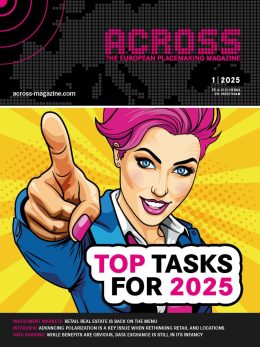Before contemplating potential synergies, examining the differences between these two sectors is essential. The retail and hotel industries exhibit distinct differences in their market approaches due to the specific nature of their services and products and the differing customer interactions and expectations. These include:
Retail Industry:
- Primarily sells physical products from attractive brands that customers want to own and use.
- Utilizes discounts and special offers to boost sales, relying on discounted loyalty programs and continuous advertising to encourage repeat purchases.
Hotel Industry:
- Provides services designed to offer a positive experience for guests, focusing on hospitality, comfort, and overall experience.
- Increasingly employs dynamic pricing strategies based on demand, season, availability, and (digital) purchasing sources.
- Discounts are often offered in the form of package deals or early booking discounts. They emphasize personalized services and loyalty programs to encourage repeat stays, with a greater emphasis on personal experiences and satisfaction.
The retail experience is heavily influenced by the shopping environment, product availability, customer service, and value for money. In contrast, the hotel experience is shaped by the entire stay, including room comfort, service quality, additional amenities, and the staff’s hospitality.
When examining potential target groups, we also see different segmentations. The retail industry often segments customers based on demographic, geographic, and behavioral characteristics and purchase history. On the other hand, the hotel industry segments customers more by their lifestyle and travel reasons (business travelers, vacationers, families, couples), length of stay, and specific needs (e.g., wellness, conferences). These different perspectives can be attributed to the shorter sales cycles in retail and the brief, transaction-based interactions with customers. In contrast, the hotel industry has a longer sales cycle, as bookings are typically planned and involve higher investment and consideration. Despite these differences, when examined closely, there are relevant synergy potentials between retail and hospitality. Artificial intelligence (AI) can significantly contribute to identifying and analyzing these synergies by processing vast amounts of unstructured data and providing valuable insights within the context of a combined view. AI can analyze customer data from both industries to identify patterns and overlaps in demographic characteristics, preferences, and purchasing behavior, helping to identify common target groups and potentials.
A key element is the measurable Affinity of people for topics, brands, and activities. Affinity is an expression of a stronger emotional relationship with a place. If people show an affinity for a place or activity, they are more interested and engaged. We will illustrate this with the following case study: Using our proprietary, AIsupported evAI analysis methodology, we examined Vienna Airport, the adjacent nh Airport Hotel, and the Parndorf Fashion Outlet, located approximately 35 kilometers from Vienna Airport:
The absolute numbers show the range of visitors to the nh Hotel, Vienna Airport, and Parndorf Fashion Outlet per week (data basis: Social Genome Data, ages 18-65, with 80%–90% coverage in Austria). The indicated percentages show the respective affinity levels for shopping, sports (activity), entertainment, air travel (frequent travelers), and hotels (overnight stays). For example, between 51% and 53% of visitors to the nh Hotel have an affinity for the retail offerings of the Parndorf Fashion Outlet. Approximately 42% of visitors to the Parndorf Fashion Outlet have an affinity for staying at nh Hotels. A more in-depth analysis of a perfect brand match would show in which specific target group segments the brand affinity between nh Hotels and Parndorf Fashion Outlet is highest and what concrete synergies can be derived from this.
Measuring the lifestyle through the affinity of target groups around retail stores or hotels enables the exploitation of new marketing opportunities. Every airport, venue, and hotel attracts people who are potentially interested in shopping. Evaluating lifestyle affinities allows for discovering synergies and boosting sales efforts. Based on this data and insights, personalized recommendations and offers can be created according to customer preferences and behavior. For example, hotel guests could receive targeted retail offers and vice versa. Dynamic pricing models can also be developed, adjusting prices based on demand, customer profiles, and other factors to maximize revenue potential. The proprietary evAI method can also create predictive models to identify future trends and demand developments. This can help both retail and hospitality better respond to seasonal fluctuations and changes in customer behavior. Another application of the insights gained is to purposefully analyze the entire customer journey to identify touchpoints and pain points. This helps optimize interactions between retail and hospitality and create a seamless experience.
evAI is a solution provider in the market for “Contextual Intelligence.” A proprietary analysis method based on “Natural Language Processing” extracts, analyzes, and contextualizes business-relevant information from texts. Our clients come from the automotive, high-tech, and branded goods industries, as well as retail, increasingly from the placemaking industry. The evAI analysis method identifies relevant communities and their lifestyles, affiliated brand worlds, market participants, barriers, opportunities, risks, and disruptive forces. evAI “designs” forward-looking market models from the collected data and identifies existing and potential catchment areas. Supported by AI, existing but hidden market knowledge is analyzed in the context of the questions posed and incorporated into market models that significantly minimize decision-making and investment risk. For the placemaking industry, evAI analyzes existing and future locations worldwide and their potential down to the postal code level. Billions of data points on communities and their lifestyles are available and help clients leverage agglomeration advantages.






